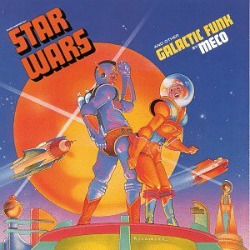Jonathan L. Friedmann, Ph.D.
Jerry Goldsmith, a top film composer of the second half of the twentieth century, regularly worked on projects unworthy of his artistic expression. His filmography includes over two hundred titles, along with a hefty body of television work. Much of it is stale genre fare: thrillers, westerns, maritime adventures, and war movies. According to Mauricio Dupuis, author of Jerry Goldsmith: Music Scoring for American Movies, “It is almost proverbial, among enthusiasts of this composer and the applied cinematic genre in general, to consider Goldsmith a rare example of talent and technical ability frequently applied to projects lacking in ideas.”
Star Trek: The Motion Picture is a case in point. Somewhere between mediocrity and a critical failure, the thinly-scripted and over-budget 1979 film famously strayed from the character-driven saga of the original series. It is a meandering attempt to hybridize Star Trek, Star Wars, and 2001: A Space Odyssey. Even the costumes are a bland shadow of their former selves. Director Robert Wise—legendary for helming The Day the Earth Stood Still, West Side Story, and The Sound of Music—admitted, “Thank goodness we had Jerry’s score…He really saved us.”
Film music accomplishes a number of aims: establishing atmosphere, setting a mood, building anticipation, amplifying gratification, aiding characterization, shaping narrative, unifying images, and so forth. A well-written score (or well-constructed compilation score) naturalistically undergirds and interacts with the visuals and non-musical sounds. On screen as in life, music is interwoven into human experience, at times underscoring activities, and other times transcending them.
Just as a thoughtful score can “save” a lackluster scene, good music can mitigate a less-than-spectacular day. “Good” is used here in the utilitarian sense of serving a need or function; or, as Baruch Spinoza wrote, “By good I mean that which we certainly know to be useful to us” (Ethics IV, Definition 1). A soundtrack for film or daily life is essentially Gebrauchsmusik: music for a purpose outside of the music itself. When the action is intrinsically compelling, good music enhances it. When events are droll or disappointing, good music provides a ray of light. The latter might be called “Gebrauchsmusik plus,” with the effect surpassing the reality of the moment.
University of Groningen researchers Jacob Jolij and Maaike Meurs touched on this in their 2011 study, “Music Alters Visual Perception.” They found that emotional stimuli, like music, influence not only how listeners feel, but also how they see the world. When music stimulates something positive within, the world tends to improve accordingly. (Of course, the opposite is also true.) A favorite song on the radio can temporarily brighten a slog in heavy traffic; a well-chosen playlist can ease the toil of washing dishes. And, as Jerry Goldsmith often discovered, incidental music that exceeds the quality of a film can improve the cinematic experience.
Visit Jonathan’s website to keep up on his latest endeavors, browse his book and article archives, and listen to sample compositions.


